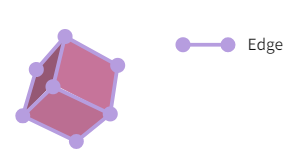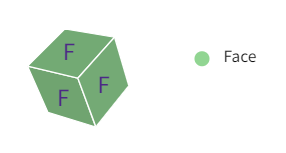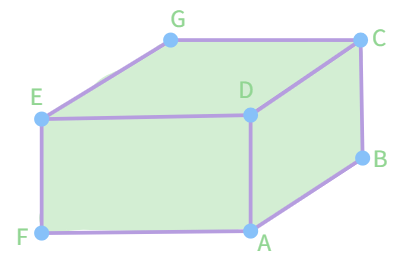Faces, Edges and Vertices
When we take a solid from a variety of distinct choices, each of them will have a particular properties. How do we identify these specific properties. For that we need to know about - faces, vertices (vertex - singular) and edges.
Faces: The surface of a solid is its face. Usually, solids have more than one face.
Vertices : The common point at which two (or more) adjacent faces/planes meet each other in a solid.
Edges : The line segment which shares common points with two adjacent faces/planes in a solid.
Looking at the cube below:



Vertices, Edges and Faces of a Cube
The 4 corners of the cube are its vertices. The 6 line segments that form the skeleton/frame of the cube are its edges. The 4 flat square surfaces that are the skin of the cube are its faces.
Knowing this -

We can similarly, say that in the above given image:
the blue corner corner are
while the purple sides are the
and the green two dimensional planes are the
When we start looking at objects in from a three-dimensional perspective, some terms that we come across are faces, edges and vertices.
Now, that we are aware of faces, vertices and edges:
Can we say that the two dimensional figures of a solid, are the faces of the three dimensional shapes of that solid?
For example- A cylinder has two faces which are circles (top and bottom) and the third is a rectangle (which forms the curved surface). In case of a pyramid, it has a square/triangle base (bottom) while having triangles as its side faces.
The shapes that we have spoken about are very basic and often in real-time, the shapes that we encounter will be much more complex. There will be multiple cases where these shapes would have to be visualised on a 2-D surface, that is, on paper.
For this, we need to know about nets.
